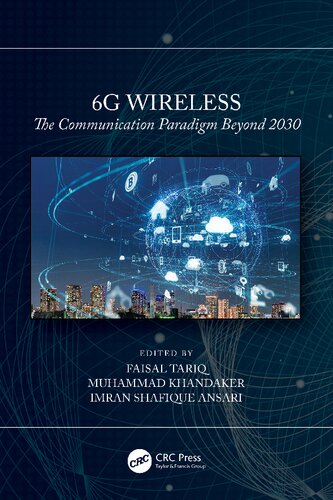

Most ebook files are in PDF format, so you can easily read them using various software such as Foxit Reader or directly on the Google Chrome browser.
Some ebook files are released by publishers in other formats such as .awz, .mobi, .epub, .fb2, etc. You may need to install specific software to read these formats on mobile/PC, such as Calibre.
Please read the tutorial at this link: https://ebookbell.com/faq
We offer FREE conversion to the popular formats you request; however, this may take some time. Therefore, right after payment, please email us, and we will try to provide the service as quickly as possible.
For some exceptional file formats or broken links (if any), please refrain from opening any disputes. Instead, email us first, and we will try to assist within a maximum of 6 hours.
EbookBell Team

4.7
76 reviews6G Wireless: The Communication Paradigm Beyond 2030 offers a thorough discussion of some key emerging technologies such as Intelligent Reflecting Surface (IRS), Unmanned Aerial Vehicles (UAV), Aerial Computing, Terahertz (THz) Communications, Non-Orthogonal Multiple Access (NOMA) and Rate Splitting Multiple Access (RSMA).
The book provides a comprehensive coverage of the vision, requirements, use cases, enabling technologies, and challenges for the future 6G wireless communication systems. This includes discussions on how 6G and future IoT systems will enable extremely low latency healthcare systems, smart industry, haptic communications, programmable wireless environment (PWE), advanced VR/AR and holographic communications. IRS is expected to play a prominent role in 6G and the book thoroughly discusses the role of IRS in enabling physical layer security, UAV communications as well as D2D communications. It also explains channel modeling for IRS enabled PWE.
Another key aspect of the book is that it provides a comprehensive discussion on security challenges of emerging 6G systems and their potential solutions. Apart from this, it also explains how blockchain techniques can be used for future IoT applications such as intelligent manufacturing and asset tracking.
Written in tutorial style, the book is primarily intended for postgraduate students and researchers in the broad domain of wireless communications as well as research-active academics. The book can also be useful as a reference book for BSc/MSc project/thesis works.